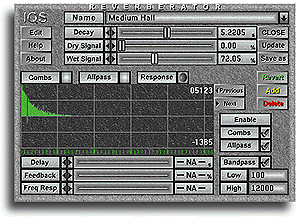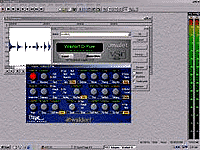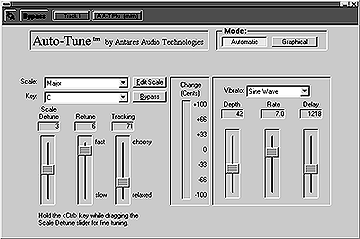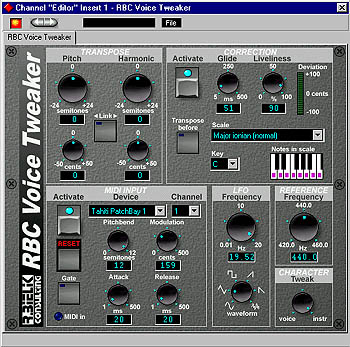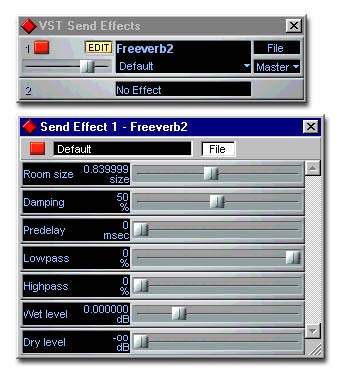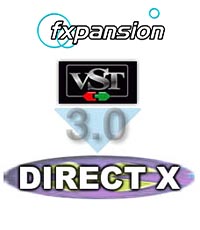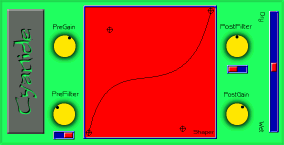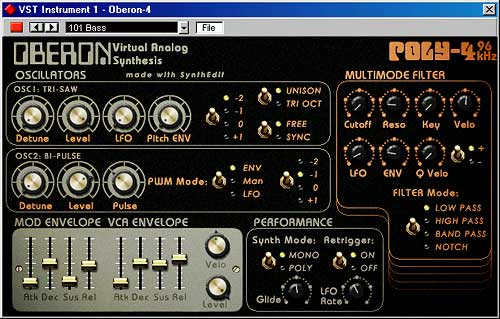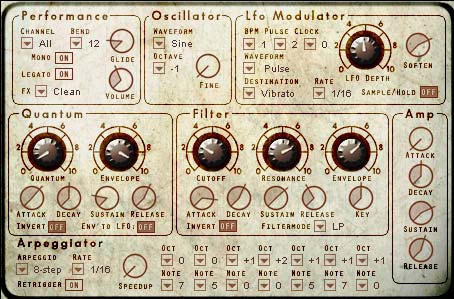Cockaigne Little Duck
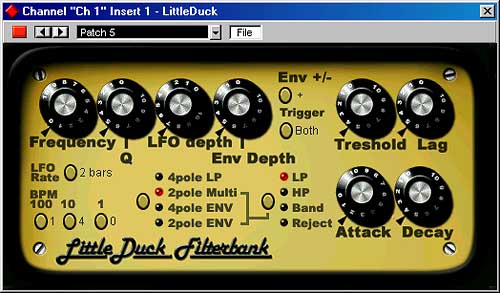
Category: Products / music software / software effects
Added: 02-Nov-02 | Author: admin
New price: free | S/H price: Not listed
Company Link: Cockaigne
Cockaigne Little Duck
I LOVE this filter!! -= I think this is some competition for the Ohmforce boys!... You can set a tempo in 'Hundreds', 'tens' & 'units' to make say a BPM of 145 by making the BPM settingas: 1 (hundred), 4 (tens) & 5 (units)Various pole filter choices can be chosen and then filter types from lo, hi, band, etc pass filter types... automatable as a VST plugin... Great stuff !!
Here's the info from the included .txt file:
Overview:
This VA stereo filterbank has a retro look that might upset you, but don't worry, those knobs work just like the rest. The arrow on shows the current value on the knob in a same vay those old guitarknobs used to do (yes, I am a guitarist).
Filter Section:
There are five filtermodes in Little Duck. 4 pole Low Pass, 2 pole Low Pass, 2 pole High Pass, 2 pole Band pass and 2 pole Band Reject. ENV modes are the same filters with envelope follower. FREQUENCY controls the filters cutoff frequency and Q controls the resonance.
Envelope follower:
There is two ways to trigger the envelope: BOTH uses the stereo input signal itself to trigger the envelope and LEFT SC (Sidechain) is a special mono mode where Right signal is the carrier that is affected and Left is a modulator that is only used to trigger the envelope and is not heard. SO when you use the LEFT SC mode you must route the affected signal all the way to the right with pan and triggering signal to the left.
TRESHOLD determines when the triggering signal starts to work in a way that lower the treshold, easier it is to trigger the envelope. Sometimes when the triggering signal is too low or constant (not enough dynamics) the envelope follower might not work as expected. The LAG is control for simulated lag processor that softens the triggering signal with lowpass filter so that when it is higher only very loud or bass signal peaks trigger the envelope. This is useful when you want that only the kick drum of the filtered loop triggers the envelope for example.
Envelope:
The envelope itself is a simple Attack Decay envelope. ATTACK is from 5ms to 315ms and DECAY is from 10ms to 2 seconds. It is important to know that the envelope cannot be retriggered while it is is still working so you can get decent sweeps. ENV DEPTH controls the amount of envelope. ENV +/- chooses between regular increasing mode and inverted one where the amount of envelope decreases the cutoff frequency.
Triangle LFO:
There is a internal beats-per-minute pulse clock in Little Duck that can be used to sync the LFO. You can manually select the BPM tempo with each digit and then the LFO RATE determines how long it takes that Triangle LFO to move its whole wavelenght. For example if the rate is set to 2 bars then it takes two measures (at selected tempo) to sweep up and down. The rates ranges from 8 bars to sixteenth notes and there is alse certain triplets to choose. The LFO DEPTH controls the amount of LFO. It is good to bear in mind that LFO sweeps both up and down (positive and negative) so you should set the FREQUENCY according to that. For example if you use full depth then it is wise to set the FREQUENCY at least at five so the filter doesn't close totally at the nadir of the LFO.
MIDI CC chart:
1 Frequency (cutoff)
3 Q (resonance)
4 Envelope depth
9 LFO depth
20 Treshold
21 Lag
22 Attack
23 Decay
LITTLEDUCK is tested with Sonar 1.3 running DirectiXer 2, Psycle 1.66, and Cubase SX. It has also been reported to work in Orion, Logic and Massiva too. If the knobs introduce crackles to the sound in Psycle,you should increase the latency.
Product Manuals or Files
Product Resources
More choices in this product category from other manufacturers:
Category: Products / music software / software effects
User Comments
THERE ARE NO COMMENTS POSTED FOR THIS PRODUCTBe first to add a comment - what's the product like in real life?...
'Cockaigne Little Duck'
Looking for the manual? - Check this page above under the heading: 'Product manual or files' - We might have it!
Note: To cut down on spammers, cookies must be enabled to post comments to this page.
Looking for the manual? - Check this page above under the heading: 'Product manual or files' - We might have it!
[back to top]
Total stars: 2 | Total votes: 1
3 other
products from
Cockaigne
Thomann deals
